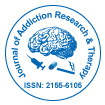Nosso grupo organiza mais de 3.000 Séries de conferências Eventos todos os anos nos EUA, Europa e outros países. Ásia com o apoio de mais 1.000 Sociedades e publica mais de 700 Acesso aberto Periódicos que contém mais de 50.000 personalidades eminentes, cientistas de renome como membros do conselho editorial.
Periódicos de acesso aberto ganhando mais leitores e citações
700 periódicos e 15 milhões de leitores Cada periódico está obtendo mais de 25.000 leitores
Indexado em
- Índice de Fonte CAS (CASSI)
- Índice Copérnico
- Google Scholar
- Sherpa Romeu
- Abra o portão J
- Genâmica JournalSeek
- Chaves Acadêmicas
- JornalTOCs
- SegurançaLit
- Infraestrutura Nacional de Conhecimento da China (CNKI)
- Biblioteca de Periódicos Eletrônicos
- RefSeek
- Universidade Hamdard
- EBSCO AZ
- OCLC – WorldCat
- Catálogo online SWB
- Biblioteca Virtual de Biologia (vifabio)
- Publons
- Fundação de Genebra para Educação e Pesquisa Médica
- Euro Pub
- ICMJE
Links Úteis
Diários de acesso aberto
Compartilhe esta página
Abstrato
Predicting Attrition in the Treatment of Substance Use Disorders
Robert Sky Allen and Bradley D Olson
Objective: The purpose of this study was to examine the problem of attrition in the treatment of substance use disorders. The authors analyzed the retention rates of 191 participants who were assigned to an episode of substance abuse treatment. Two types of attrition, the first due to participants withdrawing prematurely from treatment and the second due to participants failing to complete a posttest survey, were investigated. Relationships were found between severity of the substance use disorder and a tendency to withdraw prematurely from treatment. Though the study is far from perfect, the authors strongly believe that it confirms the importance of a rigorous alliance between therapist and client, especially for those likely to disengage early.
Method: Participants provided a self-report assessment of their substance use patterns on a pretest survey, and also received a clinical assessment of psychosocial functioning. The scores from these two instruments were used to calculate an index quantifying the severity of substance use disorders. When scale data began to suggest that the severity of the disorder correlated with retention rates, the authors conducted more complex statistical analyses to determine which elements of the participants' profile were most likely to predict attrition.
Results: A significant finding of the study is that attrition can be predicted with some certainty. When the probability of premature disengagement is predicted, decisions can be made to direct participants to supportive environments that foster therapeutic alliance and increase readiness for treatment. In spite of being a reliable predictor of attrition, however, these variables explained only about 27% of variance in therapy outcomes.
Conclusion: Recommendations for future research are made, including the need to highlight the importance of contextual factors, such as therapeutic alliance and motivational interviewing, on client retention. Future research could identify new predictors, and raise questions about others. Prospective studies should be theory-driven, should utilize measures of known reliability and validity, and should employ statistical methods appropriate to the hypothesis or theory under investigation.
Diários por Assunto
- Agro e Aquicultura
- Alimentação e Nutrição
- Bioquímica
- Ciência da Computação
- Ciência de materiais
- Ciencias ambientais
- Ciências Clínicas
- Ciências Farmacêuticas
- Ciências gerais
- Ciências Médicas
- Ciências Sociais e Políticas
- Ciências veterinarias
- Economia e Contabilidade
- Enfermagem e cuidados de saúde
- Engenharia
- Engenheiro químico
- Física
- Genética e Biologia Molecular
- Geologia e Ciências da Terra
- Gestão de negócios
- Imunologia e Microbiologia
- Informática
- Matemática
- Química
Revistas clínicas e médicas
- Anestesiologia
- Assistência médica
- Biologia molecular
- Cardiologia
- Cirurgia
- Dermatologia
- Diabetes e Endocrinologia
- Doenças infecciosas
- Enfermagem
- Fisioterapia e Reabilitação
- Gastroenterologia
- Genética
- Hematologia
- Imunologia
- Medicamento
- Medicina Reprodutiva
- Microbiologia
- Nefrologia
- Neurologia
- Odontologia
- Oftalmologia
- Oncologia
- Ortopedia
- Pediatria
- Pesquisa Clinica
- Pneumologia
- Psiquiatria
- Toxicologia

 English
English  Spanish
Spanish  Chinese
Chinese  Russian
Russian  German
German  French
French  Japanese
Japanese  Hindi
Hindi